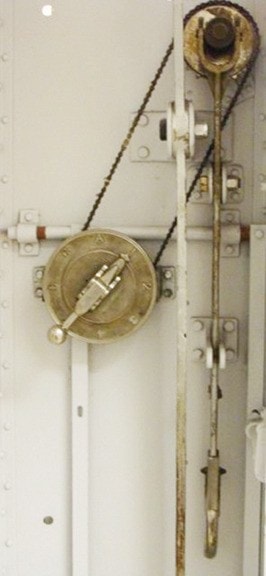But S.J. Willis School did have a perverse charm for me as it was built on the site, 1874-1914, of the provincial jail.
I’ve mentioned how I often find ideas for these columns in today’s news. Sort of “what’s old is new(s) again”.
The recent reports of a seaman’s miraculous survival by clinging to two jerry cans after he was swept overboard is a perfect example. On page two of the Times-Colonist was a photo of the M.V. Oliver Clark II, the vessel in question.
It was her classical lines that drew me to the caption identifying her. Without hitting my files I knew she had to be a former B.C. Forestry vessel with that name — a name I’ve told about in previous Chronicles.
Briefly, Oliver Gosnald Clark is one of our few heroes who has been formally recognized. A Forest Ranger, he gave his life in 1925 during a forest fire at Port Neville. After evacuating his crew to safety he braved the flames to check for stragglers. When his body was recovered his Forestry badge was clasped tightly in his hand, his last thought having been to his body being properly identified.
This one was buried in a recent brief article on a proposed development in Victoria.
It’s to take the place of a grassy plain between Wark Street and Hillside avenues, near Bay Street. I’m mildly surprised that it’s taken this long for “progress” to catch up with one of the few remaining undeveloped plots in this busy area.
When I attended S.J. Willis Jr. High School, back in the Dark Ages, this was the lower sports field, used primarily for grass hockey as I recall.
Now S.J. Willis has always held a special place in my memory. God, how I hated my three years there. It was run on the Pavlovian Principle. There was a bell (buzzer) for everything. A bell would signal that the doors were open; no matter how vile the weather we weren’t allowed access to the building until that damned bell rang.
A second bell signalled we were to go to our lockers. Two minutes or so later, a third bell ordered us to take our seats in the classroom. Yet a fourth bell signalled we were to begin classes.
And on and on throughout the day. It was regimentation at its best, something I’ve fought ever since.
But S.J. did have a perverse charm for me. It was built on an oak-studded ridge that was the site, 1885-1912, of the provincial jail until it was moved to Wilkinson Road. It was a joke of reluctant students like me that nothing had really changed.
But it was that very history of having been a prison that intrigued me.
They used to hang people here! Perhaps on the very spot on which I was standing! Perhaps from that tall oak tree!
Now, I knew nothing more about the so-called Hillside Jail aka the Topaz Jail than that. But it was enough to spur me to scour the grounds in search of ruins or—? The only physical evidence that remained of the prison days was a grim looking concrete bunker at the entranceway to the school. It was so well built, for what original purpose I never did know, that Canada Customs used it for a bonded warehouse.
Across Topaz Avenue, in the trees through which I walked or biked to school, there were some nondescript concrete slabs. Whether they owed their provenance to the jail I don’t know although my imagination certainly made a connection. How many lunch hours I spent, wandering the school grounds and trying to picture what they were like when this was a real penitentiary.
But it took me years before I was able to dig into this dark chapter in provincial history. In the meantime, I’d been informed by several articles in The Islander, the weekend magazine of the Colonist. For years the late Cecil Clark, retired deputy commissioner of the B.C. Provincial Police, wrote a series of true crime stories. It was from Clark that I learned that the Hillside Jail was known, by inmates and the general public, as “Heartbreak Hill” — for reasons easily imagined. It was Clark who confirmed that there were indeed hangings there — five of them, in fact.
I can recite the names by heart even now: Sproule, Featherstone, Lynn, Stroebel and Frith. From a proper gallows, mind you, not from an oak tree. I’ve told the story of sawyer Featherstone who murdered Mary Jane Dalton at South Wellington. Ditto Hugh Lynn who murdered for money on Savary Island. I’ve yet to write about Sproule, Stroebel or Frith; they’re fodder for future Chronicles, even a book.
But back to those former playing fields between Topaz and Hillside. These few acres, I’ve since learned, were part of the jail’s farmyards, probably used as truck gardens, as all such institutions raised their own produce and livestock.
Which fact made them a perfect place for a cemetery. A cemetery for Stroebel, Sproule, Featherstone, Lynn and Frith! If I am correct and they are indeed buried there in unmarked and unconsecrated ground, they’re about to be disturbed by the bulldozers of development.
Such is progress. At least their stories, grim though they be, will live on.
www.twpaterson.com
